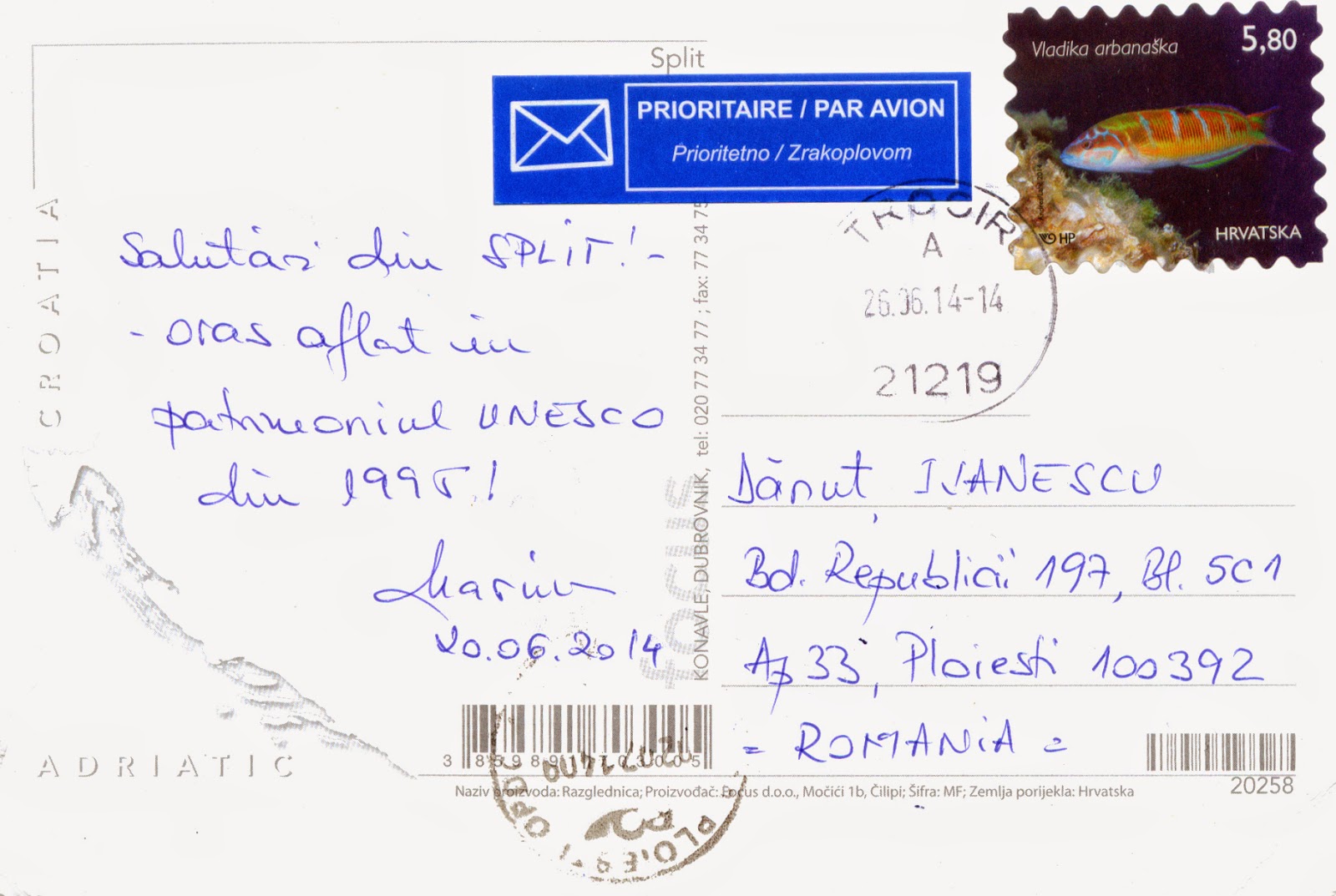July 29, 2014
0733, 0734, 1136, 1170 CROATIA (Split-Dalmatia) - Historical Complex of Split with the Palace of Diocletian (UNESCO WHS)
Posted on 11.07.2013, 09.07.2014, and 29.07.2014
It is said that the Diocletian's Palace is placed on the center of the city of Split. For the sake of accuracy, I must say that in fact the city was built around the palace. It was began in 293 AD, and was finished in 305, right on time to receive its owner, who retired there, becoming the first Roman Emperor to voluntarily remove himself from office. He will enjoy only 6 years by the pleasures offered by the opulent refuge, because he committed suicide in 311. After the Romans abandoned the site, the palace remained empty until the 7th century, when nearby residents fled to the walled palace to escape invading barbarians, and so was born the current city. After the Middle Ages the palace was unknown in the West until the Scottish neo-classical architect Robert Adam discovered the ruins in 18th century.
As can be seen in the first postcard, a reconstruction of the palace in its original appearance, made by the French architect and archaeologist Ernest Hébrard in 1912, the ground plan of the assembly is an irregular rectangle (approximately 160m x 190m), with towers on three sides. The palace is enclosed by walls, and at times, it housed over 9000 people. Only the southern facade, the one seaward, was unfortified. The palace combines therefore the qualities of a luxurious villa with those of a military camp. A monumental gate in the middle of each of the walls led to an enclosed courtyard. The southern sea gate (the Porta Aenea) was simpler in shape and dimensions than the other three. The transverse road (decumanus) linking the eastern gate (the Silver Gate or Porta Argentea) and western gate (the Iron Gate or Porta Ferrea) divided the complex into two-halves.
A monumental court, called the Peristyle, formed the northern access to the imperial apartments. It also gave access to Diocletian's mausoleum on the east (now Cathedral of St. Domnius), and to three temples on the west (two of which are now lost, the third having become a baptistery, originally being the temple of Jupiter). The northern half of the palace, divided in two parts by the main north-south street (cardo) leading from the Golden Gate (Porta Aurea) to the Peristyle, is less well preserved. The palace was built of white local limestone, marble of high quality, tuff and brick, and was decorated with numerous 3500 year old granite sphinxes, originating from the site of Egyptian Pharaoh Thutmose III. Only three have survived the centuries. In the left is the Bell Tower, constructed in the year 1100 AD, in the Romanesque style, the city's main symbol.
The Cathedral of St. Domnius, known locally as the Sveti Dujam, is the Catholic cathedral in Split, actually a complex of a church and a bell tower. Strictly the church is dedicated to the Virgin Mary, and the bell tower to Saint Duje. The cathedral, consecrated at the turn of the 7th century, is regarded as one of the oldest Catholic cathedral in the world that remains in use in its original structure. The structure itself, built in 305 as the Mausoleum of Diocletian, is the second oldest structure used by any Christian Cathedral. The Bell Tower was constructed in the year 1100, in the Romanesque style.
About the stamps
On the first postcard
The theree stamps in the right upper corner belongs to a set which is part of the large definitive series named Croatian Ethnographic Heritage. This set, designed by Orsat Franković and Ivana Vučić (after a photography by Ivo Pervan), and issued on September 30, 2008, depicts motifs of folk costumes, and contains the following five stamps:
• Sunja (0,10 HRK) - it's on first postcard
• Bistra (0,20 HRK) - it's on first postcard
• Bizovac (0,50 HRK)
• Ravni (1.00 HRK) - it's on first postcard
• Pag (10.00 HRK)
The first stamp of down, depicting Makarska and issued on March 30, 2001, is part of a large series of definite stamps named Croatian Towns.
The second stamp of down is part of the sixth set of the series Croatian Music, designed by Ana Žaja and Mario Petrak, and issued on January 17, 2006:
• Boris Papandopulo (1,80 HRK)
• Milo Cipra (2,30 HRK) - it's on first postcard
• Ivan Brkanović (2,80 HRK)
On the second postcard
About the first stamp, depicting Makarska, I wrote above. The second stamp is part of the annual series named Famous Croats, which in 2004 reached to the 6th set. This set, issued on April 22, 2004, contain four stamps:
• 400 Anniversary of the birth of Ivan Lučić (2,30 HRK) - it's on second postcard
• 500 Anniversary of the birth of Antun Vrančić (3,50 HRK)
• 500 Anniversary of the death of Andrija Alesi (3,50 HRK)
• 400 Anniversary of printing of Bartol Kašić's First Grammar of the Croatian language (10,00 HRK)
On the third and fourth postcard
The stamps, depicting Ornate wrasse a / Thalassoma pavo and Golden sponge / Aplysina aerophoba, are part of the series Croatia Undersea World, about which I wrote here.
References
Diocletian's Palace - Wikipedia
Cathedral of Saint Domnius - Wikipedia
Historical Complex of Split with the Palace of Diocletian - UNESCO official website
Croatian Ethnographic Heritage - Hrvatska pošta official website
Famous Croats VI - Hrvatska pošta official website
Sender 1, 2: Vladimir Klešćic (direct swap)
sent from Samobor (Zagreb County / Croatia), on 28.06.2013
Sender 3, 4: Marius Vasilescu
sent from Trogir (Split-Dalmatia / Croatia), on 26.06.2014
Subscribe to:
Post Comments (Atom)









No comments:
Post a Comment